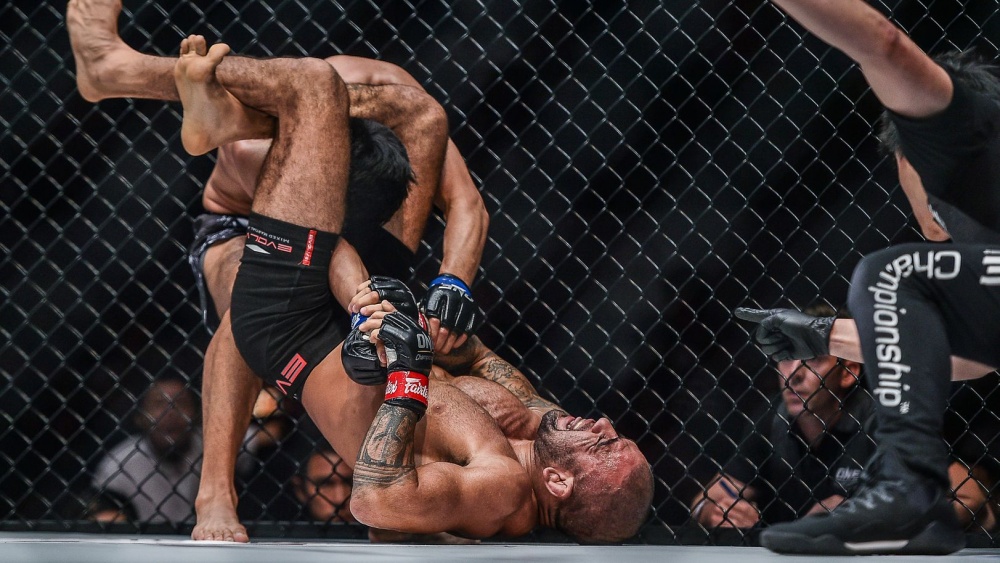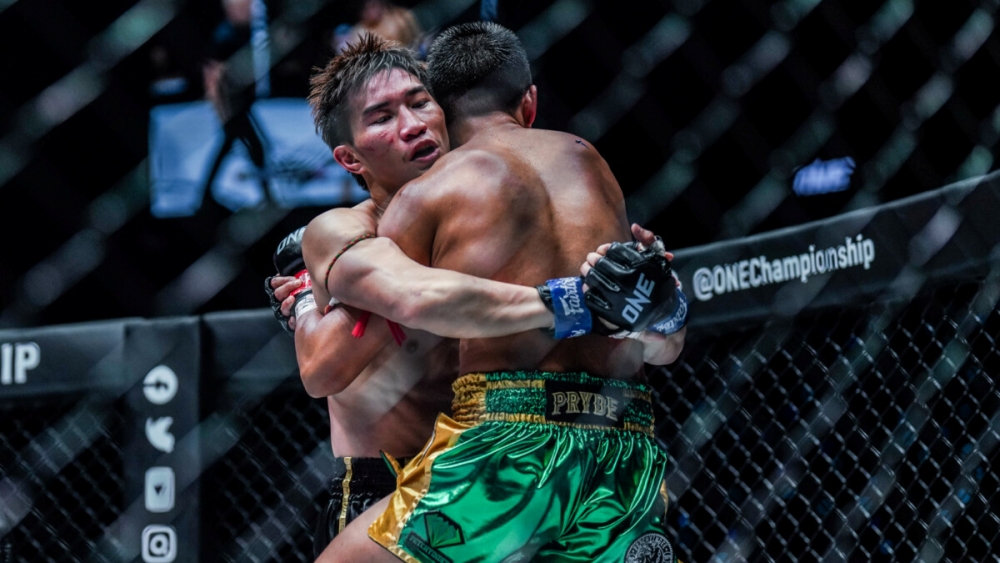Brazillian Jiu-Jitsu (BJJ) can be practiced in many ways – it can be used for self-defense, a sport, or as a part of your overall training when you do mixed martial arts (MMA). With that, it is important to understand that how you practice BJJ may change depending on your chosen sport’s needs and rules. This article will discuss one of the most impressive-looking techniques in BJJ: the flying armbar.
The Flying Armbar
The flying armbar is a basic armbar done while standing. To define, an armbar is a grappling technique where you isolate and pressure your opponent’s arm using your legs as a wedge. You then pull the arm at an angle while raising your hip to put pressure on the elbow joint. It is a highly technical move where you use your body position and timing to leverage and score a quick tap.
How To Do A Flying Armbar?
The flying armbar (and all flying submissions, for that matter) starts with getting proper grips. We mentioned that flying submissions usually involve attaching yourself to the opponent from a standing position. To properly do this, you must first dominate the grip battle to create openings. As a rule, you should have some form of head and arm control before you jump and execute the armbar. Using some form of collar grip or collar tie is a must, to isolate the head. You then control an arm by using various grip techniques like the overhook. The purpose of these techniques is to ensure that you stay safe while jumping – the grips act as glue so that you’ll stay attached to your opponent while executing the attack.
With Gi Flying Armbar
In this video, Professor Thadeu Vieira demonstrates the flying armbar in the Gi. Notice that he uses a collar grip to control the head and a sleeve grip to control that arm. From here, he places his foot near the opponent’s hip to act as a counterbalance. Next comes the jumping technique; make sure to not jump backward as this is a common mistake that most beginners make. A good tip here is to jump slightly forward, just enough to off-balance the opponent. You can then arc your top leg towards the opponent’s head. If you do this right, you should be able to land on the mat with your grips still intact. You then finish the submission by extending the trapped arm.
No-Gi Flying Armbar
In this video, MMA Legend Shinya Aoki from the EVOLVE Fight Team demonstrates the flying armbar. To start, pull your opponent towards you while keeping your grips. Next, jump towards your opponent and step your right leg back and hook it towards the hip. Swing your other leg to isolate the head, ensure that your head and arm grips are as tight as possible to prevent yourself from falling. Swing your leg up and over to the side of your opponent’s head and make sure to keep your opponent’s arm in a tight grip with your legs. Extend your leg to drop your opponent to the mat and switch your grip to control the end of the arm. From here, you can finish the armbar by shifting the grip on your right hand to your opponent’s wrist and putting pressure on the arm while using your body to block movement.
Flying Armbar With No Initial Grip
In this video, BJJ black belts Ty Gay and Brian “T-City” Ortega demonstrate a variation of the flying triangle without the initial grip. This technique works if one of your opponent’s arms is up and the other is down. One thing to take note of when executing this move is the safety hand just when you’re landing. Both Ty and Brian mentioned that this can be a risky technique to pull off but is very devastating if executed perfectly.
Rulesets May Vary
Take note that not all rulesets allow flying submissions. Since flying submissions require a strong understanding of technique, lower ranks are not allowed to use them in most competitions. Always review the rules of the competition first before even thinking of using flying armbars in your matches.
Safety
Keep in mind that flying submissions are inherently risky. Any form of attack that involves jumping towards an opponent poses risks of injury because the way you land can vary depending on body position. This means that both the attacker and defender are at risk of getting hurt if flying attacks are executed poorly.
To minimize the risks of injury, it is imperative to drill flying submissions in a safe and controlled manner. Always start by working on getting grips before you attempt to jump. Grip fighting is only half the battle in BJJ, especially in the Gi. Always strive to get dominant grips to control your opponent’s upper body. You can drill these by practicing sequences where you strip a grip and work on getting your grips.
When you get comfortable with grip fighting, you can then practice the actual jumping submission. Start by drilling the technique without any resistance. Make sure you understand the underlying principles of the technique; it is not a good idea to rely solely on strength and explosiveness when drilling flying submissions. Do this consistently and slowly add resistance as you get more confident in your execution.
Always ask your instructor if you are unsure of your technique. It is recommended that you practice any flying submission with your instructor by your side to minimize risks and injury. Also, make sure that you have a good understanding of the basic armbar from the closed/open guard before attempting the flying armbar. The mechanics of the armbar from guard is the same as the flying variation, meaning if you master the basic armbar from guard, the level of difficulty you encounter when transitioning to the flying armbar will be reduced.
Final Thoughts
In summary, the flying armbar is a great technique with lots of fight-ending potential. As with any technique in BJJ, proper execution is always king, so study up on the technique with an open mind. Stay safe on the mats and have fun!
If you enjoyed this article, you may also like:

















